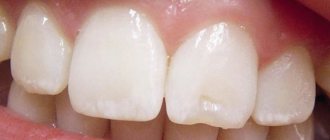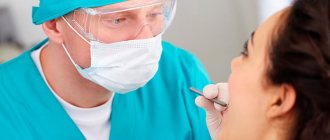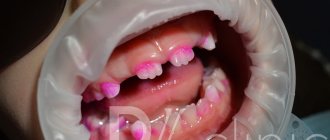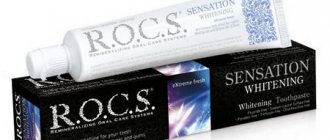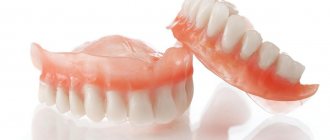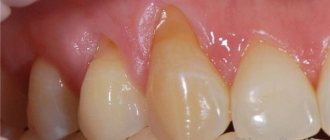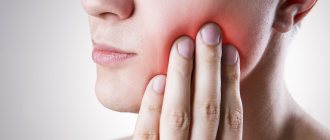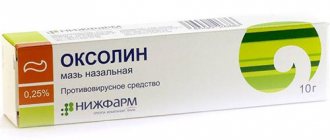Without any doubt, coffee grounds are a coloring agent. With its help, they change the shade of hair and fabrics, and artists even manage to paint pictures. It is not surprising that coffee lovers develop coffee stains on their teeth after a while. True, it is still possible to avoid such problems. To do this, you just need to know a few tricks to prevent changes in the shade of tooth enamel.
Does coffee make teeth yellow?
The statement that coffee turns teeth yellow is not entirely true. Changing the color of enamel is quite problematic. To do this, you should drink a large amount of espresso per day and completely neglect the rules of oral hygiene.
Drinking coffee drinks is often combined with smoking. In this case, it is not coffee that harms your teeth, but a bad habit. The color change is noted precisely because of it.
It should be noted that the shade of enamel is different for each person. Weak yellowness often turns out to be natural. Therefore, you shouldn’t blame it on the espresso you drank in the morning.
Benefits of tea
Green hour has a very beneficial effect on the oral cavity: it improves blood circulation in the gums and also strengthens the teeth. Thanks to the beneficial microelements contained in tea (fluoride, iron, zinc, calcium), you can even avoid inflammation of the gums and tissues surrounding the tooth, and also slightly whiten your teeth. Naturally, tea cannot make it snow-white like after a teeth whitening procedure in Minsk
Scientists have proven that people who regularly drink green tea visit the dentist much less often. This, of course, does not mean that lovers of this drink do not suffer from oral diseases; it’s just that tea has a kind of preventive effect, since it is considered a good antibacterial agent against caries. Why not help on the farm? Saves us money on dental treatment under anesthesia or any other dental procedures that help maintain healthy teeth. And for those who suffer from halitosis, or, in other words, bad breath, green tea can easily replace chewing gum or mints. In general, solid advantages, and that’s all.
How does the drink affect tooth enamel?
Enamel has a porous structure. Microparticles of coloring pigment easily cling to pores. As a result, dark spots appear. At the same time, some people have smooth teeth and practically nothing sticks to them. Therefore, they can enjoy their favorite drink without restrictions, without worrying about the appearance of plaque.
In addition, the following factors influence yellowing:
- coffee temperature Drinking hot drinks is harmful. High temperatures lead to expansion of dental tissues and an increase in pore size. Therefore, plaque forms faster;
- acidity _ Arabica contains significantly more acids than robusta. Therefore, when it is consumed, the enamel deteriorates and coloring pigments settle.
Separately, it is worth mentioning coffee with milk. Scientists conducted an experiment in which they used teeth previously removed from different people. One part of them was placed in black espresso, and the other in a drink with added milk. In the first case, severe yellowing was noted. At the same time, the second batch practically did not change color.
Another benefit of dairy products is that they contain calcium. This microelement is necessary to strengthen the enamel. If there is not enough of it in the body, a person’s teeth turn yellow, hurt, and their teeth begin to deteriorate faster.
Appearing yellowness is not only an aesthetic problem. Over time, plaque accumulates, mineralizes and turns into tartar. This becomes the cause of caries.
Positive effects of natural coffee
Previously, it was believed that coffee was extremely harmful to the oral cavity and bone tissue. But not so long ago, scientists found that the drink also has positive properties. These include the bactericidal properties of caffeine. True, it is necessary to prepare and drink the drink without dairy additives and sugar. Controlling bacteria helps delay the onset of dental caries.
Robusta beans contain twice as much caffeine. Accordingly, the effect of destroying bacteria that form plaque on enamel is several times stronger. The problem is that Robusta is very difficult to drink neat due to its bitter taste. Nevertheless, the fact remains.
Video: Plaque from coffee and tea - how to whiten teeth. Advice from a professional dentist
Scientists at the University of Tokyo are creating a new generation of toothpastes based on polyphenols contained in coffee beans. They are able to destroy most bacteria found in the oral cavity.
Blood microcirculation in the vessels increases when caffeine is consumed, so the tissues are enriched with oxygen, and the process of disposal of toxic substances is accelerated. At the same time, inflammatory processes occur in the gums, caused by stagnation and lack of oxygen.
Drinking coffee correctly
To prevent your teeth from turning yellow, you need to drink coffee according to certain rules. In order to prevent unwanted changes, you should follow a number of simple recommendations:
- drink espresso with cream, milk, or at least switch to Americano;
- Do not drink excessively hot drinks. You need to wait a little for it to cool down;
- rinse your mouth with water every time after drinking espresso;
- use professional oral hygiene products.
Effective ways to remove plaque
Simple folk methods will help remove yellowness and weak plaque:
- baking soda. It is gently rubbed into hard dental tissues using a brush or cotton wool. Then the oral cavity is rinsed with plain water;
- Activated carbon . One tablet is ground into powder, which is then applied to the brush. Clean in the usual way, then rinse your mouth;
- hydrogen peroxide. You need to brush your teeth with this product for a couple of weeks. You should be very careful when doing this. This is an effective whitening method, but there is a risk of damaging the enamel.
Activated carbon
Baking soda
Hydrogen peroxide
The following pharmaceutical products will help eliminate the problem at home:
- Electric Toothbrush. The speed of the device is quite high. Therefore, it is possible to carry out a thorough cleaning and eliminate newly formed plaque;
- special strips with a whitening effect . The product is effective, but expensive. The strip is glued onto yellowed fabrics and left for about half an hour. The maximum effect is achieved two weeks after the start of use;
- whitening gels . Considered safe and effective. They are applied to a clean surface and wait until completely dissolved. Such manipulations are performed daily for fourteen days;
- sticks. They have a mild whitening effect. They are typically used to prevent plaque formation and are used immediately after drinking espresso.
Professional cleaning by a dentist is also effective. The procedure is performed in several ways:
- polish using baking soda or lemon powder. This way, soft plaque is eliminated;
- ultrasound. The method allows you to get rid of fossilized, old plaque;
- laser. The method is the most effective, but expensive. In addition, there are a number of contraindications to the use of laser.
Coffee after cleaning, implantation, filling and tooth extraction
Drinking the drink after cleaning the enamel in the dental office is allowed at least two days later. In addition, during the first two weeks you should drink espresso in limited quantities. After this time, you are allowed to return to your normal routine.
If implantation or filling has been performed, there are no strict restrictions. However, it is worth considering that the materials used in the work process can be painted and have high permeability for a short time. Therefore, it is still recommended to avoid products with coloring pigments for at least a day.
Drinking coffee after tooth extraction is allowed after just three hours. The main thing is that the drink is not hot.
You should not drink espresso before performing this procedure. Caffeine can shorten and weaken the effects of anesthesia.
How to prevent coffee stains
It is easier to prevent the appearance of coffee stains than to get rid of them later. Prevention and simple precautions will help you preserve your snow-white smile:
- Do not drink coffee that is too hot. High temperatures not only damage tooth enamel, but are also harmful to the digestive tract.
- Do not prolong the process of enjoying an invigorating drink; the sooner you drink it, the less staining substances will settle on the tooth enamel.
- A good way to avoid contact of dyes with tooth enamel is to drink drinks with dye pigments through a straw. Although this method may seem unusual at first, it will allow you to drink coffee slowly and fully enjoy the process.
- Reduce the amount of sugar added to the drink, and preferably drink it unsweetened. Excess sugar on the teeth is retained in the form of a film in which Streptococcus mutans begins to actively multiply.
- Don't drink coffee with ice cream. As a result of sudden temperature changes, microcracks form and the enamel is destroyed.
- Choose coffee with less caffeine. The method of brewing also matters: a drink prepared in a coffee machine contains less caffeine than one brewed in a Turk or French press.
- Clean your mouth and teeth after eating with dental floss and special rinses.
- After drinking a cup of coffee or other liquid, rinse your mouth with warm water.
Please note that instant drink contains a larger amount of active elements that have a negative effect on tooth enamel. It is enriched with them as a result of repeated processing, which is provided for by the technological process. Therefore, give preference to a natural product.
There is no clear answer to the question of whether coffee with milk or cream causes teeth to turn yellow. On the one hand, adding milk or cream somewhat smoothes out the effect of the coloring pigments of black coffee and reduces their concentration. On the other hand, milk, like sugar, causes the appearance of bacteria.
We invite you to familiarize yourself with wisdom teeth after removal - how long will it hurt?
How long after brushing your teeth can you drink coffee?
When talking about how long after brushing your teeth you can drink coffee drinks, dentists do not indicate any restrictions. Espresso can be consumed immediately after the hygiene procedure. If a person carefully monitors the condition of the oral cavity, problems simply will not arise. True, it will be possible to reduce the harm of coffee to teeth if you clean the enamel after drinking coffee drinks, and not before.
Yellowing of tooth enamel occurs not only with excessive consumption of espresso and Americano. Negative changes are also possible for a number of other reasons. Such problems can be avoided by following a number of recommendations and systematically performing hygiene procedures.
First stage: reading
Plaque buildup is the main cause of stains. Therefore, it is best to brush your teeth regularly with whitening toothpaste. And also do not forget that it is best to have your teeth cleaned by dentists once a month.
The new Suzuki Across is a plug-in hybrid of the Toyota RAV4 with a different front end
An unknown portrait of Picasso will be put up for auction. His passion and love
Decision or tradition: William and Kate are considering whether to send their son to boarding school

